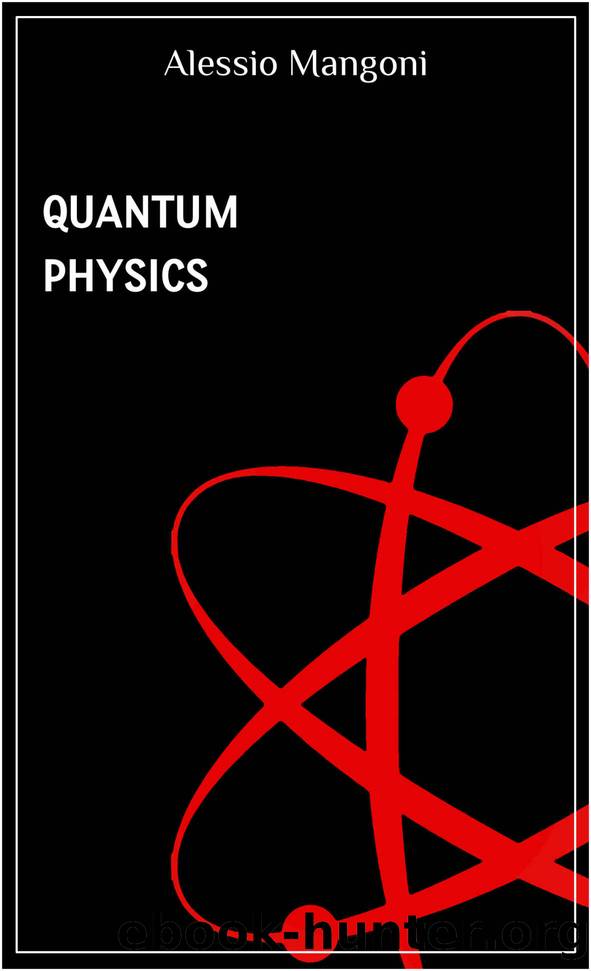Quantum physics by Mangoni Alessio

Author:Mangoni, Alessio [Mangoni, Alessio]
Language: eng
Format: epub
Published: 2020-11-25T16:00:00+00:00
The Dirac equation and antimatter
The Schrödinger equation describes well the quantum nature of particles, but it is not a relativistic equation, and hence it does not take into account the results brought, in 1905, by Einstein's special relativity. In particular, when the speed of the particles involved is close to that of light, the non-relativistic description fails dramatically. The ideal would be to formulate equations that are both quantum and relativistic, or, in other words, which include both the resutls brought by the advent of quantum mechanics, represented by Schrödinger's equation, and those introduced by Einstein's revolutionary relativity. An equation of this type would be considered as a sort of master equation. In fact, quantum theory and relativity are still today the two requisites of all new theories that aspire to describe nature correctly.
In 1928 Paul Dirac introduces such an equation that represents a generalization of the Schrödinger equation satisfying the requirements of relativity. While the latter is a second order partial differential equation between scalar quantities, the Dirac equation is a first order differential equation of matrices. The wave function present in the Schrödinger equation becomes a spinor (represented by a column vector) with four components, while some 4x4 matrices called Dirac matrices appear, in addition to the derivation operators in space and time. Moving from the non-relativistic formalism between complex scalar quantities (wave function) of the Schrödinger equation to the relativistic formalism between matrices and spinors (with complex components) of the Dirac equation, two further results of fundamental importance were automatically obtained. The first is the appearance of the concept of spin of a particle as part of the theory itself. This is a quantum number that was introduced "by hand" in the non-relativistic formulation to explain some evidence, such as the presence of two electrons in an orbital that does not violate the Pauli's exclusion principle, thanks to the additional degree of freedom represented by the spin. The relativistic formulation of the Dirac equation therefore naturally includes spin as part of the theory itself. The second and perhaps the most important novelty introduced lies in the prediction by the theory itself of the existence of anti-particles. In fact, the four-dimensional spinor that replaces the scalar wave function contains information relating to the particle, its anti-particle and their spins. The concept of particle and anti-particle (and therefore of matter and anti-matter) is predicted by the theory itself and the existence of one is not possible without the other, so much that the subsequent generalization of the Dirac equation is formulated in terms of a field theory. This implies the presence of a field of particles and anti-particles, rather than the more classical conception of single or few particles. In fact, we recall that the Schrödinger equation also describes in principle the behavior of a single particle.
The Dirac equation is suitable for the quantum and relativistic description of the electron and its anti-particle, the so-called positron, which, at the date of the formulation of the equation, is only predicted by the theory, but has no experimental evidence.
Download
This site does not store any files on its server. We only index and link to content provided by other sites. Please contact the content providers to delete copyright contents if any and email us, we'll remove relevant links or contents immediately.
The Complete Stick Figure Physics Tutorials by Allen Sarah(6650)
Secrets of Antigravity Propulsion: Tesla, UFOs, and Classified Aerospace Technology by Ph.D. Paul A. Laviolette(3581)
Thing Explainer by Randall Munroe(3337)
The River of Consciousness by Oliver Sacks(2999)
The Order of Time by Carlo Rovelli(2731)
I Live in the Future & Here's How It Works by Nick Bilton(2534)
How To by Randall Munroe(2495)
A Brief History of Time by Stephen Hawking(2482)
The Great Unknown by Marcus du Sautoy(2195)
What If?: Serious Scientific Answers to Absurd Hypothetical Questions by Randall Munroe(2178)
Blockchain: Ultimate Step By Step Guide To Understanding Blockchain Technology, Bitcoin Creation, and the future of Money (Novice to Expert) by Keizer Söze(2143)
Midnight in Chernobyl by Adam Higginbotham(2084)
Networks: An Introduction by Newman Mark(2002)
The Meaning of it All by Richard Feynman(1915)
Easy Electronics by Charles Platt(1870)
The Tao of Physics by Fritjof Capra(1859)
When by Daniel H Pink(1781)
Midnight in Chernobyl: The Untold Story of the World's Greatest Nuclear Disaster by Adam Higginbotham(1777)
Introducing Relativity by Bruce Bassett(1758)
